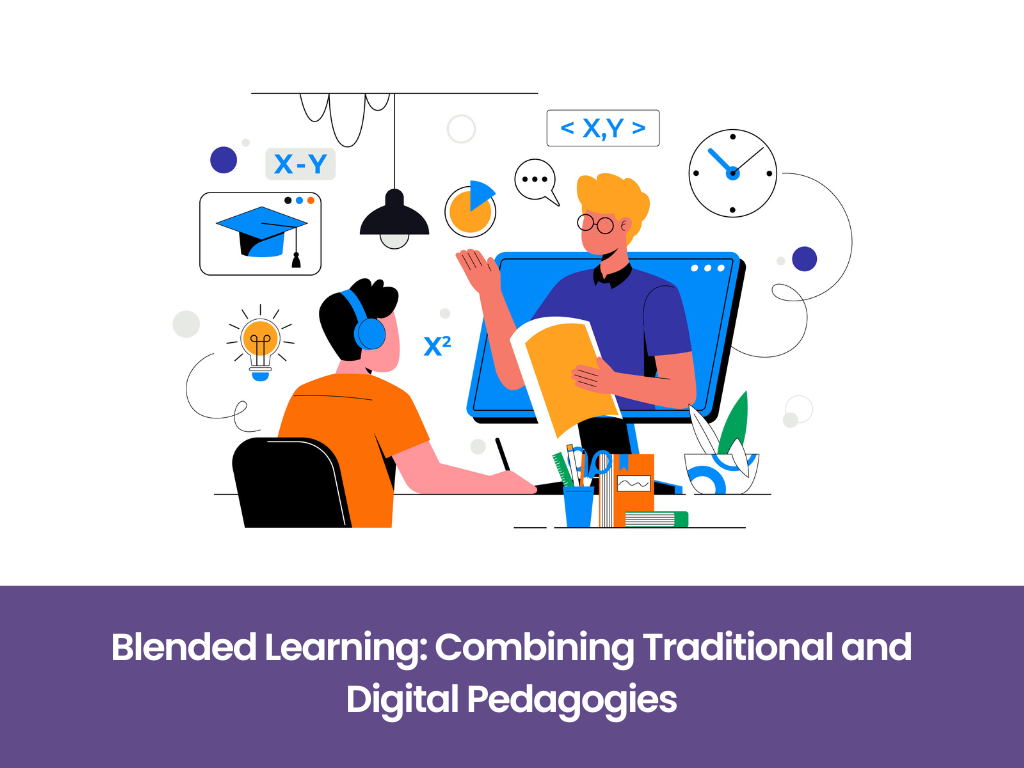Blended Learning: Combining Traditional and Digital Pedagogies
posted on Dec 28, 2023
Blended Learning represents a fusion of traditional classroom instruction with online educational methods. We at BGS Vijnatham School, one of the top school in Noida Extension believes that this hybrid approach leverages the strengths of both face-to-face and digital learning, creating a more dynamic, personalized, and effective educational experience.

Introduction
Blended Learning represents a fusion of traditional classroom instruction with online educational methods. We at BGS Vijnatham School, one of the top school in Noida Extension believes that this hybrid approach leverages the strengths of both face-to-face and digital learning, creating a more dynamic, personalized, and effective educational experience.
Understanding Blended Learning
Blended Learning involves several core elements:
- Integration of In-Person and Online Learning: It combines traditional classroom experiences with online educational activities.
- Flexibility: Offers flexibility in terms of pace, time, and place of learning.
- Customized Learning Experiences: Enables personalized learning paths tailored to individual student needs.
- Use of Technology: Incorporates various digital tools and platforms to enhance learning.
Benefits of Blended Learning
- Enhanced Accessibility: Makes education more accessible, allowing learning from anywhere, anytime.
- Personalized Learning: Accommodates different learning styles and paces, catering to individual learner needs.
- Improved Engagement: Engages students through interactive and diverse learning methods.
- Efficient Use of Resources: Maximizes the use of both traditional and digital resources in education.
- Preparation for the Future: Equips students with digital literacy skills essential for the modern world.
Implementing Blended Learning
Effective implementation of Blended Learning involves:
- Strategic Planning: Integrating digital and traditional methods in a cohesive and purposeful manner.
- Training and Support for Teachers: Providing teachers with the necessary training and support to effectively implement blended learning strategies.
- Selecting Appropriate Technology: Choosing the right digital tools and platforms that complement traditional teaching methods.
- Continuous Assessment and Feedback: Utilizing both traditional and digital means for assessment and feedback.
Challenges and Solutions
Blended Learning faces certain challenges:
- Technology Access and Equity: Ensuring all students have equal access to the necessary technology.
- Teacher Preparedness: Preparing teachers to effectively manage and integrate digital tools with traditional teaching.
- Student Engagement: Keeping students engaged and motivated in both digital and traditional learning environments.
Blended Learning in Practice
Real-world examples of Blended Learning demonstrate its effectiveness:
- Improved Student Performance: Many schools report improved academic performance with the adoption of blended learning models.
- Increased Flexibility and Adaptability: Students benefit from the flexibility to learn at their own pace and according to their personal learning styles.
The Future of Education and Blended Learning
Blended Learning is increasingly recognized as a vital component of modern education. It aligns with the evolving needs of a digital society and prepares students for the complexities of the contemporary world.
Conclusion
Blended Learning represents a significant advancement in educational methodologies, combining the best of traditional teaching with the advantages of digital technology. This approach not only enhances the learning experience but also prepares students for a future where digital literacy is paramount. While challenges exist, the benefits of Blended Learning make it an essential strategy for educational institutions aiming to provide comprehensive, flexible, and effective learning experiences.